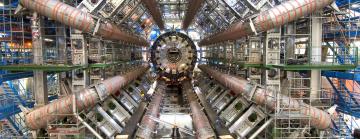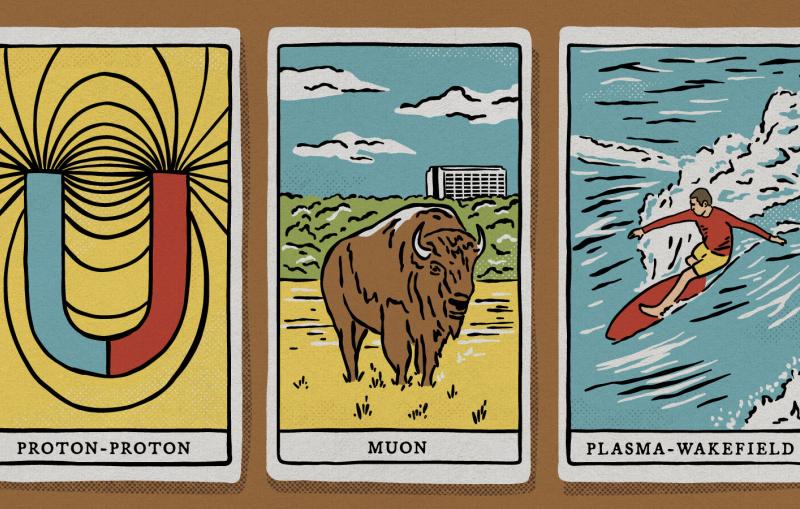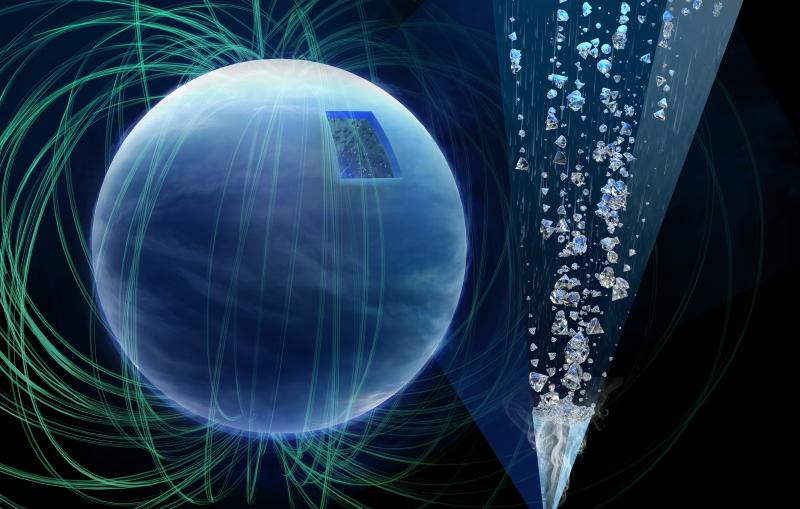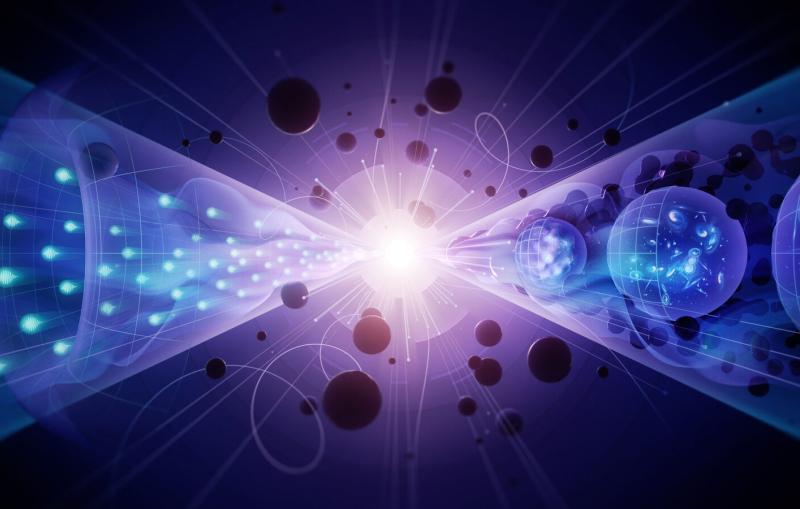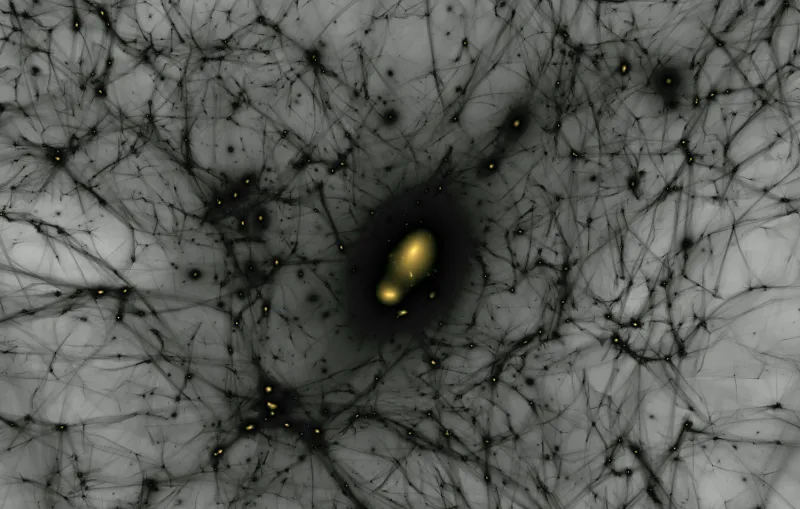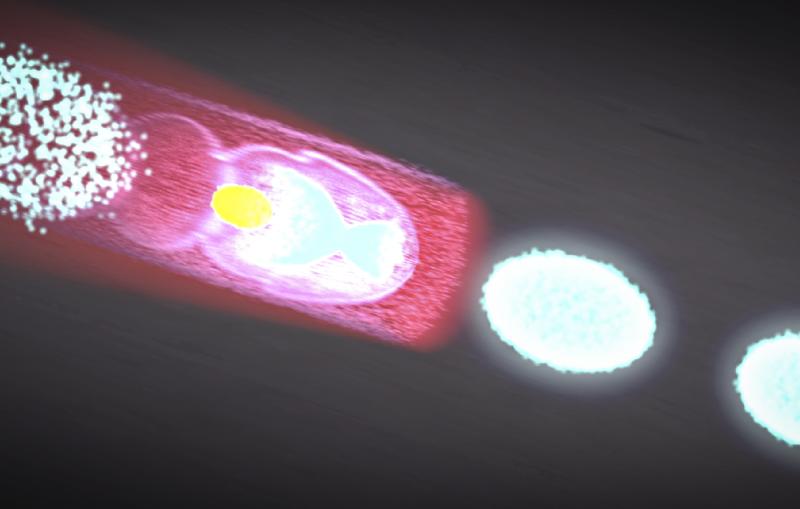Striving toward a new era of the LHC
SLAC experimentalists and theorists collaborate to develop critical detector components, data analysis tools, and theoretical models for the HL-LHC upgrade, which will investigate the Higgs boson and pursue physics beyond the Standard Model.
By Chris Patrick
The world’s largest and most powerful accelerator is getting an upgrade, and the Department of Energy's SLAC National Accelerator Laboratory is playing a crucial role.
The Large Hadron Collider (LHC) at CERN collides high energy particles to produce rarer, more massive particles, such as the Higgs boson, which was discovered there in 2012. However, there’s still much to learn about this particle, which has properties unlike all other fundamental particles.
“Discovering something is not the same as understanding that same something,” said Charles Young, a senior scientist at SLAC. To further probe the Higgs boson, physicists need more data than the LHC can provide in its current state.
For example, the self-coupling of the Higgs boson, in which a Higgs boson interacts with another Higgs boson, is an event 1,000 times rarer than producing just one of these particles.
“Understanding the self-coupling, a very special property that only the Higgs boson has, will help elucidate the nature of the Higgs field, which gives mass to all fundamental particles,” said Caterina Vernieri, assistant professor at SLAC.
To measure the self-coupling for the first time and explore the Higgs boson’s properties, the LHC is getting an upgrade: the High-Luminosity LHC. The HL-LHC will increase the LHC’s luminosity, a value corresponding to the number of collisions over a unit of time. More collisions mean more chances for rare particles to pop into existence and be caught by the accelerator’s detectors, as well as more Higgs bosons.
The recently released Particle Physics Project Prioritization Panel (P5) report named this upgrade as one of the top recommendations for the US’s particle physics community over the next decade. But before the HL-LHC begins collecting data in 2029, SLAC must finish assembling the most critical component of a detector in-house.
Building the heart of ATLAS
The ATLAS detector tracks and measures particles produced in the LHC’s collisions, but it won’t be able to keep up with the billions of collisions in the HL-LHC. These collisions will pile up on each other, making it more difficult for the detector to pick out events of note.
“We need to upgrade our detector in order to be able to cope with the more intense collision environment,” Vernieri said.
With the help of 13 other national labs and universities, SLAC is responsible for upgrading the two innermost layers of ATLAS, which are closest to the collisions. The heart of ATLAS will be replaced with the Inner Tracker (ITk), whose tiny silicon sensors, known as pixels, will track the paths of post-collision particles.
“ITk is absolutely crucial to the upgrade and fits exactly within that priority of P5,” said Philippe Grenier, level 2 manager of the ITk upgrade and lead scientist at SLAC. “Whereas most systems being delivered to CERN will be assembled there, SLAC is delivering the whole, fully assembled pixel inner system detector.”
Additionally, SLAC’s ATLAS group spearheaded the proposal to add an additional subdetector, the High Granularity Timing Detector (HGTD), which will supply precise timing information to ITk to help mitigate pileup events.
“With this new timing capability, HGTD will augment ITk such that pictures of HL-LHC events will now become movies, significantly improving the potential to discover new physics at the HL-LHC,” said Ariel Schwartzman, professor at SLAC and co-coordinator of ATLAS physics upgrade.
SLAC’s ATLAS group consists of staff scientists and professors, including Su Dong, professor at SLAC, and Rainer Bartoldus, staff scientist at SLAC, as well as technicians, postdocs, and students. Younger colleagues get the rare experience of building an entire subdetector.
“On such a big-scale experiment like ATLAS, it is a once-in-a-decade opportunity to be working on a hardware project such as ITk,” said Prajita Bhattarai, research associate at SLAC. “It is extremely exciting to be here.”
SLAC’s continued experience in silicon tracker detectors bodes well for the lab’s involvement in machines yet to be built, SLAC physicists said.
“It’s really cool that you have all of these silicon detector experts here. ITk is a stepping stone to doing more tracker designs for machines that come after the HL-LHC,” said Julia Gonski, a Panofsky Fellow and associate staff scientist at SLAC.
Forging new ML tools
Once the HL-LHC turns on, the group at SLAC will help analyze ATLAS’s data as well.
“We see ourselves as being integrated, from the design, the construction, the operation, and the performance of the detector all the way to physics analysis and extracting the outcome and publication,” said Young, PI of the ATLAS group. “To be involved from the beginning to the end is unique, and we’re proud of that.”
To efficiently analyze data from the HL-LHC, physicists in the ATLAS group at SLAC are refining and extending the application of AI. Machine learning algorithms are often used to pick patterns out of detector data.
“While we already use lots of AI at this step, we are working on making it more sophisticated,” said Michael Kagan, a lead staff scientist at SLAC working on these pattern recognition algorithms. Even with ATLAS’s upgrades, the researchers will need machine learning models that can further suppress pileup interactions to better reconstruct events.
“The work on improved HL-LHC reconstruction algorithms will be key in enabling the full physics potential of the HL-LHC, and is synergistic with the detector work,” Schwartzman said.
The ATLAS group is also attempting to implement AI during more steps in the data collection process, such as the trigger system. The HL-LHC will produce between five and seven billion collisions per second. ATLAS’s trigger system quickly but roughly reconstructs particles produced during these events to decide which events to keep and which to toss. Working with SLAC’s Technology Innovation Directorate, the ATLAS group is figuring out how to add super-fast AI to ATLAS’s trigger hardware.
“One of the things we’re excited about is putting AI right on these electronics to run at the microsecond or even nanosecond level to help with those pattern recognition algorithms,” Kagan said.
Gonski is also developing fast ML tools for ATLAS’s trigger. However, instead of saving specific events physicists are searching for, like those with two Higgs bosons for self-coupling measurements, her algorithm will save anything that looks unusual compared to regular data. This so-called anomaly detection may help find physics beyond the Standard Model.
“We have the potential to write events to disk that we’ve never seen before,” Gonski said. “There could be new physics hiding in events that have been thrown out by our trigger system this entire time.”
These algorithms may find applications beyond the HL-LHC’s trigger. Even though self-driving cars don’t require decision-making as fast as the microsecond-scale, fast ML might still be helpful. Closer to home, it could also sift through the huge amount of data that will be produced at SLAC’s upgraded Linac Coherent Light Source, LCLS-II.
The interplay of experiment and theory
SLAC’s experimentalists in the ATLAS group, who tackle data collection and analysis, also work closely with in-house theorists.
“To test our understanding, we need to know what we should expect from experiments, and that’s where my research comes in,” said Bernhard Mistlberger, staff scientist at SLAC. Physicists compare theoretical prediction with measurements in a cyclical manner to refine our understanding of the universe. “Making predictions for scattering experiments at very high precision, as is required in particular by the HL-LHC, is highly non-trivial.”
With other theorists at SLAC, including Lance Dixon, Tom Rizzo, Natalia Toro, Philip Schuster, and Michael Peskin, plus various postdocs and students, Mistlberger develops state-of-the-art tools to calculate what sorts of HL-LHC results physicists should expect according to the Standard Model. Some also work on models for new physics.
“For a theorist, being able to exchange with the experimental community is crucial, as we need to understand the experimental counterpart and the latest developments. Having ATLAS in-house is consequently just wonderful,” Mistlberger said.
Young agrees: “To extract the science, we experimentalists work closely with theorists who are performing incredibly difficult calculations. It’s a collaborative effort,” he said.
Ultimately, scientists at SLAC involved with the HL-LHC – whether working on hardier hardware, intelligent algorithms, or complicated calculations – must bring together their diverse skill sets and deliverables for this unprecedented machine to produce unprecedented results.
For questions or comments, contact the SLAC Office of Communications at communications@slac.stanford.edu.
SLAC is a vibrant multiprogram laboratory that explores how the universe works at the biggest, smallest and fastest scales and invents powerful tools used by scientists around the globe. With research spanning particle physics, astrophysics and cosmology, materials, chemistry, bio- and energy sciences and scientific computing, we help solve real-world problems and advance the interests of the nation.
SLAC is operated by Stanford University for the U.S. Department of Energy’s Office of Science. The Office of Science is the single largest supporter of basic research in the physical sciences in the United States and is working to address some of the most pressing challenges of our time.
